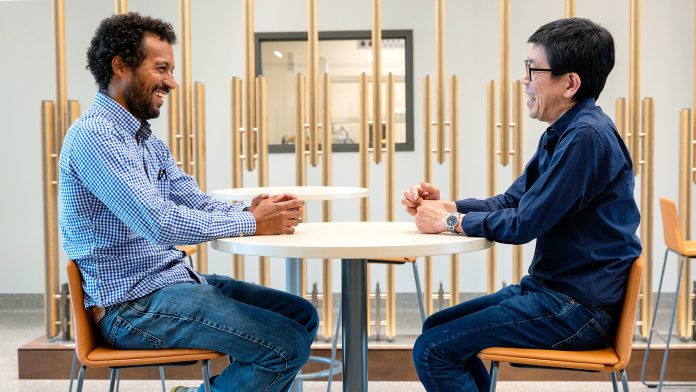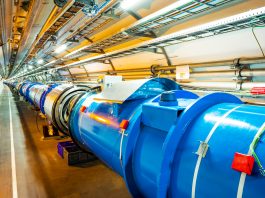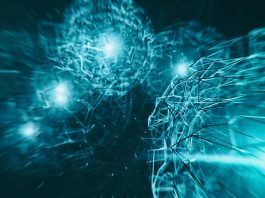Dr Jinlong Zhang, ATLAS Group Leader at the Argonne National Laboratory, discusses Argonne’s involvement in physics analysis in the ATLAS experiment at CERN.
At the ATLAS experiment at CERN’s Large Hadron Collider (LHC), more than 3,000 scientists have undertaken the search for new discoveries in areas such as physics analysis, based upon the head-on collisions of protons of extraordinarily high energy. The Argonne National Laboratory in the USA has been responsible for playing major roles in the operation of the ATLAS hadronic calorimeter and the Trigger and Data Acquisition (TDAQ) system for the unprecedented data volumes that are being produced in the course of the experiment.
Innovation News Network spoke to Argonne’s ATLAS Group Leader, Dr Jinlong Zhang, about how his lab’s involvement has developed and his hopes for the future.
Perhaps you could begin by explaining how Argonne has been involved in the ATLAS experiment at CERN? How has this involvement developed?
Argonne has been involved in ATLAS since its construction and right from the beginning of the US engagement in the experiment. I personally joined the group around 15 years ago.
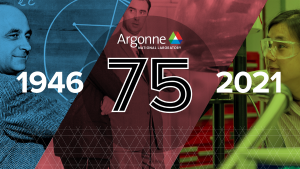
Our involvement began by utilising our expertise for the ATLAS calorimeter, the trigger and the data acquisition system, and software and computing development. However, as the experiment has evolved, as the luminosity has been increased, and as new members have joined, we have also developed other capabilities. And this has always been to serve ATLAS’s needs and to tie in with our own areas of expertise.
For example, we are currently working on a silicon detector required for the ATLAS upgrade. We are also heavily involved in the physics analysis with advanced techniques, and various other upgrades.
Does the physics analysis work take place at Argonne? Or at CERN?
Most of the work is conducted at Argonne; more so at the moment because of the COVID-19 pandemic. Regarding the physics analysis, almost everything can be done remotely, although, of course, we need to be able to access CERN’s central computer resources.
When it comes to hardware, we have a local facility where we can build and test components. Once that is complete, we send that component to CERN. We also send some of our team along with it.
How important is the optimisation of the calorimeter response to jets? How is your team approaching this? What successes have you seen?
Historically, we have very strong expertise in designing and building the calorimeters as well as reading out the information and how that information can be used to enhance the performance of the jets by developing the best algorithms. Our group contributed significantly to that during the early stages and, over time, has been able to develop the standard algorithms and hardware that are used today.
We are still active in two other areas related to the jets and calorimeter. One is flavour tagging, the task to separate jets originating from different quark flavours. The ability to identify jets stemming from the hadronisation of b-quark or c-quark (b-jets or c-jets) is crucial for the ATLAS physics analysis programme and the identification of these jets (so called heavy-flavour jets) depends strongly on the tracking efficiency and resolution and the robustness of the track-jet association logic.
The team at Argonne have thus been involved in developing different algorithms for flavour tagging and procedures for calibrating their performance for much of the ATLAS physics analysis.
The other area is continuing to monitor the performance of the jet algorithms, ensuring that they are performing as they should be and that we are able to continue our physics analysis by assessing our physics results based on their performance.
Flavour tagging and jet performance are absolutely important for new physics research, so our activities are also important moving forwards.
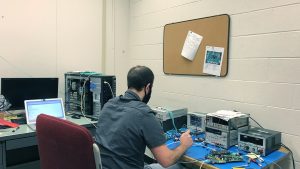
Regarding Argonne’s involvement in physics analysis, could you tell me more about your two key focus areas: searches for new physics and high-precision Standard Model measurements?
The group has been involved in the physics analysis side from the experiment’s first run. As the luminosity has increased, we have also been involved in areas such as the search for the Higgs boson, the search for supersymmetry search, and so on. Once the Higgs had been discovered, we joined the search for new physics beyond the Standard Model and that is indeed one of our group’s core focuses. The other is pushing the precision, which may help us to obtain some indication of this new physics. This is in line with the work we are doing on flavour tagging, as, if we are able to tag the heavy flavour in the multi jet final states, then we may be able to use such events to search for new evidence of new elements which are heavier than the Higgs and that decay into those final states.
To do that, of course, we need to develop special algorithms and to employ new strategies such as Machine Learning, and our group is working on that.
Indeed, some other experiments in our field have recently published results with possible indications of physics beyond the Standard Model.
How does the work you do at CERN translate/complement your activities at home?
Argonne is a multidisciplinary lab supported by the U.S. Department of Energy’s Office of Science; we have researchers working in areas as diverse as nuclear physics analysis and materials science, etc, and we also host some of the world’s most powerful supercomputers.
We always try locally in the lab to take advantage of what we learn via our work at ATLAS, such as with regard to how to process large amounts of data and how to efficiently develop software frameworks in such complicated science fields. And, of course, we also utilise the local knowledge and expertise to help the teams at ATLAS overcome any of their own challenges. It is a really mutually beneficial relationship.
In areas such as the construction of complicated detectors and the development of the necessary electronics, we bring that experience back to Argonne and use it in other science fields such as neutrino physics, cosmology, and nuclear physics analysis. That has proven to be very fruitful.
We have developed our capability of detector mechanics through our work at ATLAS, which Argonne was previously lacking, by being involved in the construction of carbon fibre support structures.
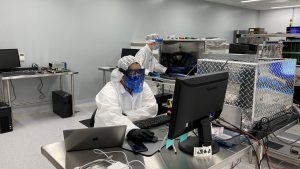
What are your hopes for the HiLumi LHC? How will your involvement develop?
We have been heavily involved in the HiLumi upgrade. Run Three is expected to begin early next year and we have already completed some projects for the first ATLAS upgrade phase, including the detector readout system. That has been installed and commissioned ready to be used in Run Three.
We also provide operation support, and in Run Three we will be contributing to data taking and physics analysis and with more data we will hopefully see something new.
We are also working on a new silicon detector and new TDAQ system, which we are building now ready to be installed in the next shutdown, after Run Three.
We will continue to ensure that the level of our engagement remains high because this is still the most exciting scientific physics project taking place today in our field, and it will remain so for a long time to come.
What are your hopes for a possible Future Linear Collider or Future Circular Collider? Do you hope to be involved?
Absolutely. In last year’s European particle physics strategy update we began to discuss the Future Circular Collider, both the hadron and lepton versions, and we actively contributed to the analysis in that report.
The US particle physics community has a similar strategy process, known as Snowmass process, and the particle physics community came together last year. It takes roughly two years to provide the input to decide what we are going to do in the next ten years. But I hope that as the US strategy is developed it will be coherent with Europe’s and we will be able to work together to develop a future project. And, of course, we will be happy to be involved.
Jinlong Zhang
ATLAS Group Leader
Argonne National Laboratory
https://www.anl.gov
https://twitter.com/argonne
Please note, this article will also appear in the eighth edition of our quarterly publication.

